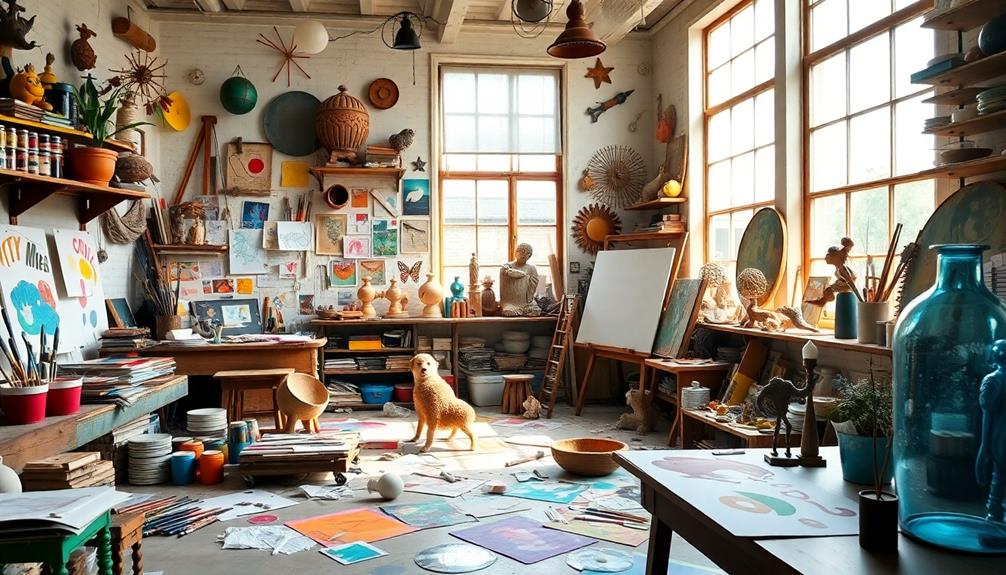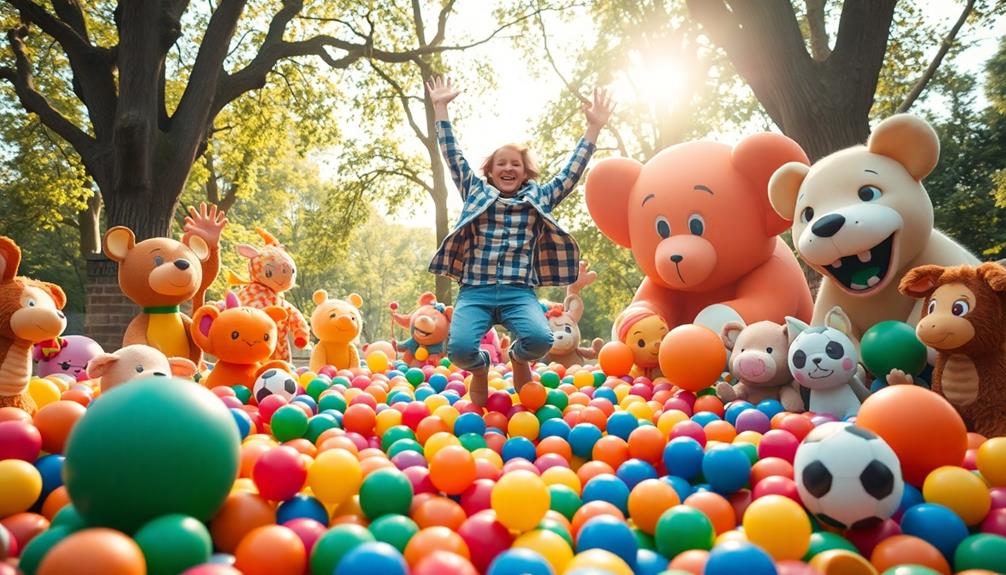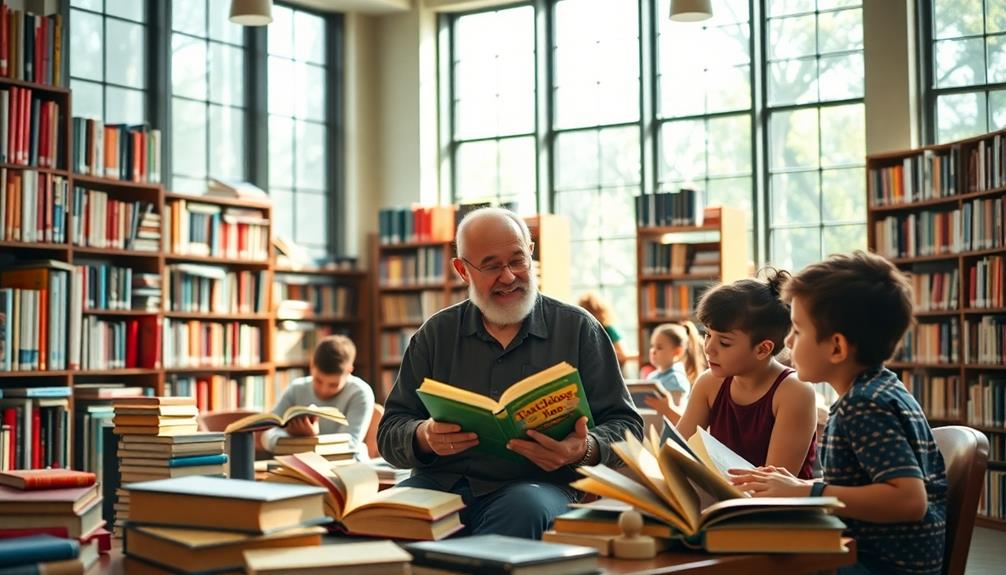Curiosity fuels your creativity in art and design by pushing you to explore new ideas and techniques. It encourages you to question the norm and seek inspiration from diverse cultures and experiences. This relentless inquiry not only enhances problem-solving skills but also opens you up to innovative solutions. Collaborating with others who share your curiosity can spark unique ideas, leading to groundbreaking expressions. By embracing a curious mindset, you enrich your artistic journey and deepen your understanding of the creative landscape. There's much more you can uncover about how curiosity shapes creativity in this exciting field.
Key Takeaways
- Curiosity encourages experimentation with new ideas and techniques, enriching artistic expression and fostering innovation in art and design.
- Engaging with diverse cultures and fields enhances creativity, providing unique perspectives that challenge conventional thinking.
- A curious mindset promotes continuous questioning, leading to breakthrough ideas and transformative design solutions.
- Collaboration driven by curiosity stimulates rich exchanges of ideas, resulting in unique approaches and enhanced creative processes.
- Embracing curiosity through exploration and inquiry expands the creative toolkit, leading to innovative and unexpected artistic outcomes.
The Essence of Curiosity
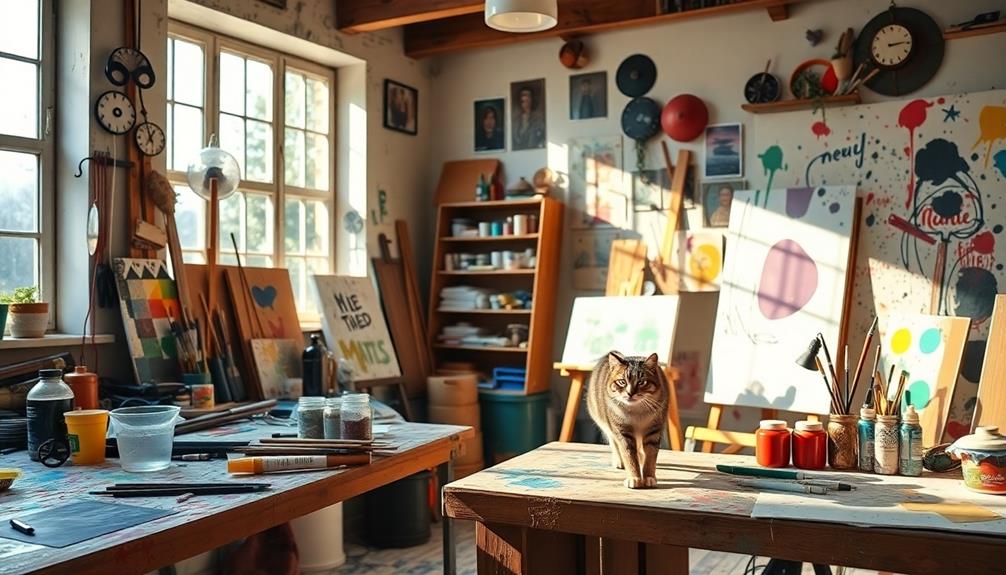
Curiosity is the spark that ignites your creative journey, driving you to explore uncharted territories in art and design. This foundational element fuels your desire to experiment with new ideas, techniques, and mediums, pushing the boundaries of traditional art forms.
When you're curious, you're more likely to engage with diverse sources of inspiration—different cultures, disciplines, and practices—that enrich your work and allow you to incorporate unique elements. Additionally, cultivating a curious mindset can help you focus on mindset to attract abundance in career, enhancing both your creative output and professional growth.
As you dive deeper into your inquiries, you'll discover that curiosity enhances your problem-solving skills. You'll tackle complex design challenges with creativity, often questioning established norms and conventions. This willingness to challenge the status quo can lead to breakthroughs that redefine both the aesthetic and functional aspects of your creations.
Curiosity doesn't just enhance your work; it also contributes to your personal growth. The continuous process of exploration and inquiry helps you develop a deeper understanding of the artistic landscape.
Curiosity's Impact on Design
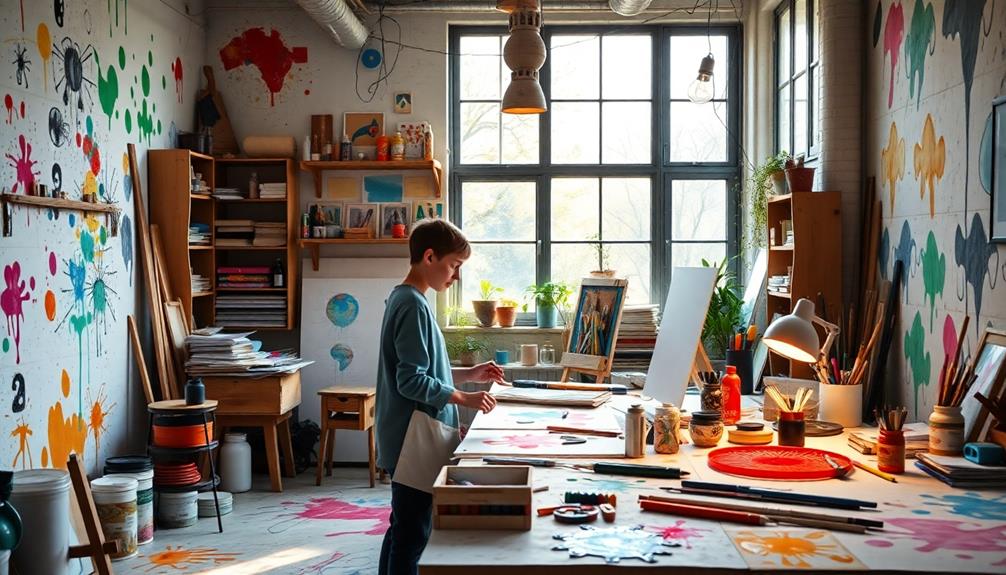
Curiosity sparks innovation in design by pushing you to explore ideas beyond the norm. It encourages you to engage with new experiences, leading to a more fulfilling creative process.
When you draw inspiration from diverse fields, you open up new avenues for creativity that can transform your work. Embracing curiosity not only enhances your problem-solving skills but also leads to unique solutions that resonate with audiences.
Curiosity's benefits extend to fostering resilience and adaptability in your creative endeavors.
Curiosity Sparks Innovation
There's something inherently powerful about the act of questioning in design. When you embrace curiosity, you start to ask questions that challenge established norms. This process encourages you to explore alternative solutions, ultimately leading to innovative outcomes.
By engaging with diverse disciplines, your curiosity allows you to draw inspiration from various fields, creating unique and cross-pollinated ideas that can elevate your work. For instance, just as the best beach towels of 2023 are crafted with absorbency and quick drying in mind, innovation in design often requires a similar focus on practicality and functionality.
A holistic understanding of design challenges emerges when you let curiosity guide you. You begin to contemplate multiple perspectives, which helps in crafting more user-centered solutions. Collaborating with diverse teams, driven by this same curiosity, can spark innovative ideas that might never surface in isolated environments.
Continuous questioning and exploration fueled by curiosity often lead to breakthrough ideas and transformative design solutions that address complex user needs.
Diverse Inspirations Enhance Creativity
Inspiration often flourishes at the intersection of diverse fields and experiences. When you embrace curiosity, you're more likely to seek inspiration from various domains, which leads to new ideas that can revolutionize your designs.
By engaging with different cultures and experiences, you enrich your work with unique perspectives that may have otherwise gone unnoticed. This exploration can spark fresh concepts, showing how cross-pollination of ideas enhances creativity in design.
Interdisciplinary collaborations are key to cultivating an environment where curiosity thrives. When you step outside your comfort zone and work with others from different backgrounds, you challenge conventional thinking and open the door to groundbreaking approaches.
Embracing curiosity can also lead to unexpected insights, transforming ordinary projects into extraordinary creative expressions.
Exploring Diverse Inspirations

Diverse inspirations can reveal new avenues in art and design, leading to innovative solutions that mightn't emerge from a single perspective. When you explore various fields like science, literature, and nature, you open yourself up to new things that can spark your creativity. Asking questions about unfamiliar art forms and cultural practices broadens your understanding and enhances your creative output.
Traveling to different regions exposes you to unique aesthetics, techniques, and traditions, enriching your artistic repertoire. By immersing yourself in diverse environments, you can discover how different cultures interpret concepts and express ideas, which can profoundly influence your work.
Interdisciplinary collaboration is another powerful tool. When you engage with professionals from various fields, you encourage the cross-pollination of ideas, resulting in groundbreaking designs that challenge conventional norms.
By incorporating elements from unrelated domains, you not only improve user experiences but also ignite your curiosity, prompting you to explore and experiment further.
Ultimately, embracing diverse inspirations fuels your creativity, allowing you to create art and designs that resonate on multiple levels and connect with a wider audience.
Techniques to Foster Curiosity
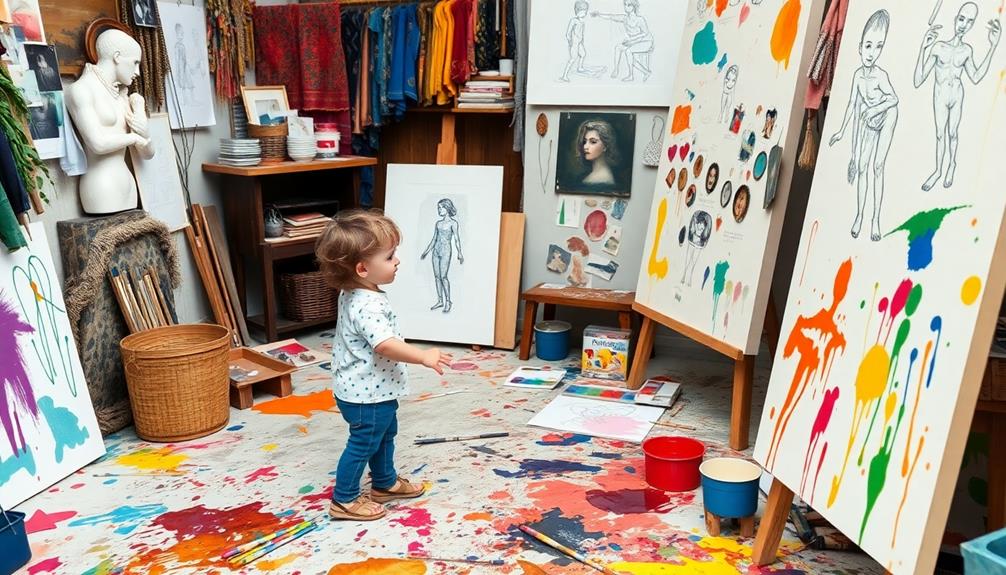
To nurture your curiosity, start incorporating daily inquiry practices into your routine.
Embracing diverse experiences, whether through travel or new hobbies, can open your mind to fresh ideas and perspectives.
Daily Inquiry Practices
Every day presents countless opportunities to spark curiosity in your art and design practice. Start by incorporating daily questioning into your routine. Ask yourself "Why?" or "What if?" to stimulate deeper thinking and solve problems creatively.
You'll find that these questions can lead to unexpected insights and breakthroughs.
Set aside time each day for free writing or sketching. This habit captures spontaneous ideas and insights, fostering a continuous flow of creative inquiry.
Don't shy away from engaging with diverse sources of inspiration—explore art from different cultures or genres. This exposure can broaden your perspective and ignite curiosity about unfamiliar techniques and concepts.
Consider keeping a curiosity journal. Document questions, observations, and inspirations you encounter daily. Over time, this practice enhances your reflective thinking and strengthens your creative muscles.
Embracing Diverse Experiences
Exploring new experiences can ignite your curiosity and fuel your creativity in art and design. By engaging in activities like traveling or experimenting with different artistic mediums, you can gain fresh perspectives that inspire innovative ideas.
The Power of Curiosity lies in its ability to combat the feeling of time speeding up with age, making every moment feel vibrant and full of potential.
Collaborating with individuals from diverse backgrounds opens up a rich exchange of ideas, leading to unique solutions and approaches. Reading widely across various genres exposes you to different viewpoints, further stimulating your curiosity and expanding your creative repertoire.
Don't underestimate the impact of questioning unfamiliar concepts. This habit drives exploration and can inspire innovative artistic expressions.
Participating in workshops and community events related to art and design also encourages spontaneous learning and interaction. These shared experiences can enrich your creative process.
Curiosity in Collaborative Environments
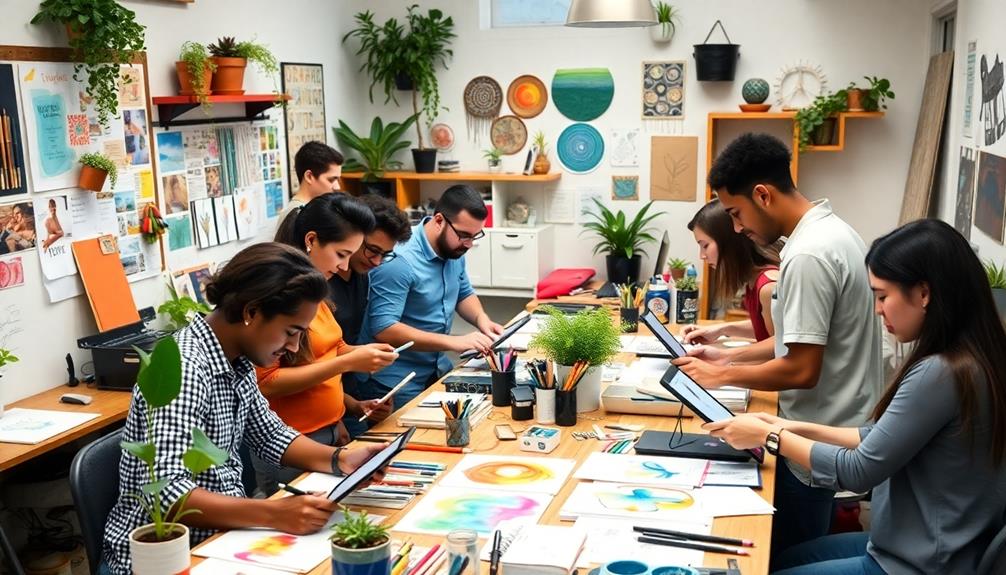
Curiosity in collaborative environments acts as a catalyst for innovation, enabling team members to share diverse perspectives that spark creative solutions.
When you engage with colleagues from various disciplines, you create opportunities for cross-pollination of ideas, enhancing your creative output and enriching the design process. This dynamic environment promotes the exploration of new concepts, allowing you to tackle challenges from different angles.
Research shows that teams that encourage questioning and exploration are more likely to produce breakthrough concepts and products.
Your curiosity drives deeper engagement with the issues at hand, making it easier to identify innovative solutions. Additionally, curiosity-driven collaboration strengthens interpersonal relationships, fostering a more cohesive and motivated team.
The Intersection of Curiosity and Innovation
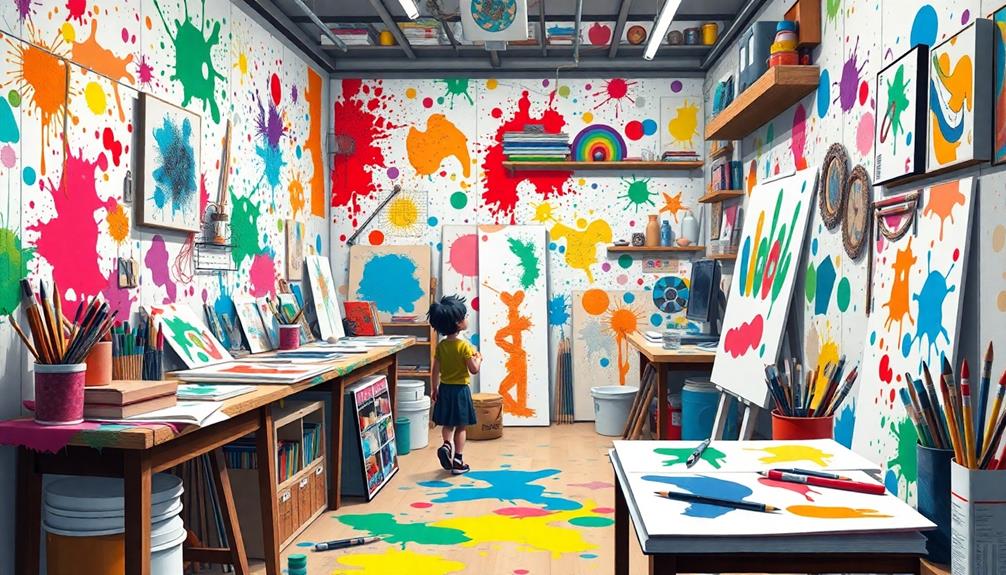
Collaboration often ignites curiosity, setting the stage for innovative breakthroughs in art and design. When you foster an environment where curiosity thrives, you're primed for fresh, innovative ideas that challenge the status quo.
By encouraging creative exploration, you push yourself and your team to probe into unconventional concepts, leading to unique products and groundbreaking expressions.
Engaging with diverse disciplines can also spark curiosity. By drawing connections between seemingly unrelated fields, you reveal innovative solutions that mightn't have emerged otherwise.
Asking "what if?" becomes a powerful tool, enabling you to question established norms and drive significant breakthroughs in your work.
Research shows that environments prioritizing curiosity produce higher levels of innovation. When you feel empowered to take risks and explore new concepts, you release the potential for creativity to flourish.
In this intersection of curiosity and innovation, you'll find the magic that transforms ideas into reality. Embrace curiosity, and watch it propel your artistic and design endeavors into uncharted territories, where the next big breakthrough awaits.
Learning Through Exploration
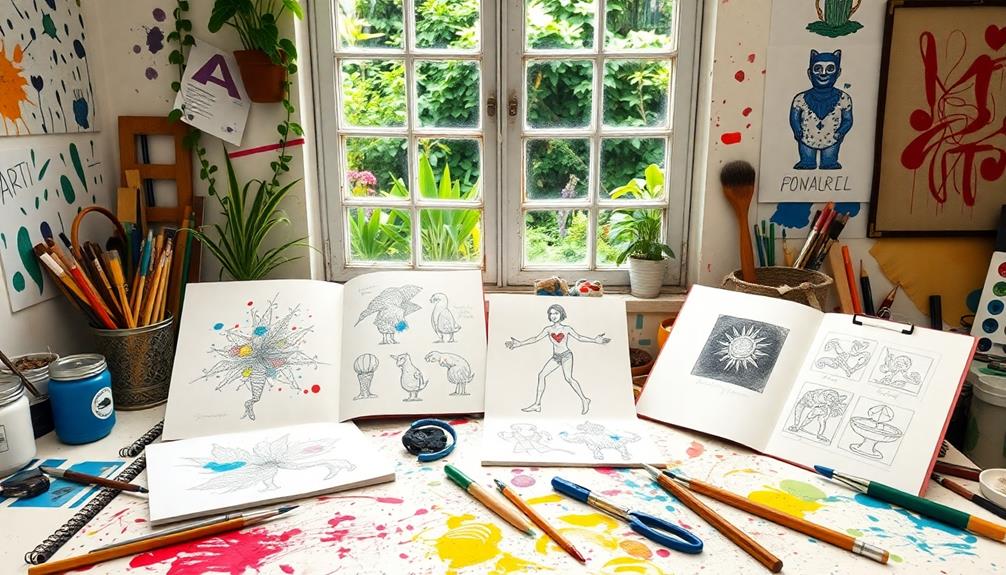
Diving into new experiences can open up a world of possibilities in art and design. When you embrace exploration, you discover new techniques and materials that expand your creative toolkit.
Stepping outside your comfort zone can lead to unique approaches, allowing you to tackle projects from fresh angles. Engaging with diverse environments and cultures not only enriches your perspective but also informs your artistic expression and design solutions.
As you explore unfamiliar genres or styles, your curiosity naturally sparks experimentation and innovation. You'll find that participating in workshops, exhibitions, and collaborative projects creates an atmosphere ripe for exploration.
Sharing ideas and techniques with others often leads to unexpected creative breakthroughs.
Moreover, research shows that hands-on exploration—like field trips or studio visits—significantly enhances learning outcomes. These experiences provide real-world context and inspiration for your creative endeavors.
Real-World Examples of Curiosity

Exploration isn't just about trying new techniques or materials; it can also inspire you to look at the world differently. Curiosity drives creativity and innovation, and many renowned artists and designers have exemplified this through their work.
Here are three real-world examples:
- Salvador Dalí: His curiosity led him to experiment with surrealism, breaking artistic conventions and creating iconic pieces that challenge perception.
- Steve Jobs: As Apple's co-founder, his insatiable curiosity about user experience resulted in groundbreaking products like the iPhone, which transformed how we interact with technology.
- Stella McCartney: Her curiosity about sustainability has shaped her fashion brand, proving that eco-friendly practices can coexist with high style.
These examples show how curiosity fuels creativity, pushing boundaries and inspiring meaningful change.
Whether it's through the striking forms of Frank Gehry or the bold designs of Paula Scher, each approach illustrates how a curious mindset can lead to extraordinary outcomes in art and design.
Embracing curiosity not only enriches your creative process but also encourages you to explore new perspectives and possibilities.
Embracing a Curious Mindset
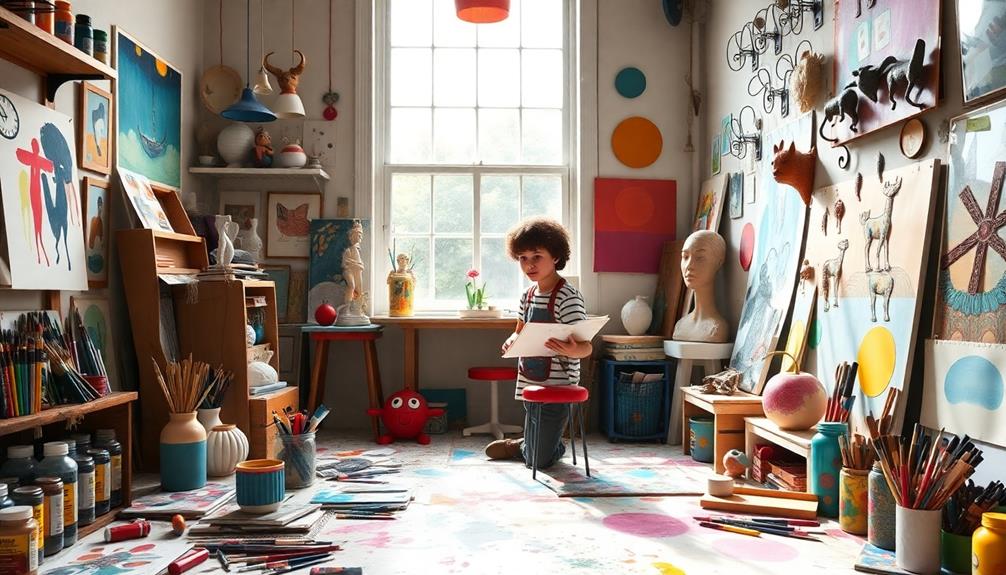
A curious mindset opens a world of creative potential, inviting artists and designers to ask "what if?" and venture beyond conventional boundaries. When you embrace curiosity, you release innovative ideas and pave the way for creative breakthroughs.
Research shows that individuals with a high level of curiosity engage in diverse experiences, enriching their creative output greatly.
Curiosity encourages you to cultivate a habit of continuous questioning. This exploration takes you beyond your primary skill set, allowing you to discover new techniques and concepts that can elevate your work.
By engaging with unfamiliar content and perspectives—such as different cultures or disciplines—you can spark inspiration that enhances your artistic expression.
Moreover, a curious mindset enhances your problem-solving abilities and promotes collaboration. When you collaborate with others, you're more likely to gain fresh insights and unique design solutions.
So, don't shy away from asking questions or seeking out new experiences. Embrace your curiosity, and watch how it transforms your creative process, leading you to uncharted territories in art and design.
The possibilities are endless when you allow curiosity to guide your journey.
Frequently Asked Questions
How Does Curiosity Enhance Creativity?
Curiosity enhances creativity by pushing you to explore new ideas and perspectives.
When you ask questions and seek answers, you expand your mind to possibilities you hadn't considered before. This habit of inquiry leads to innovative solutions and unique approaches to challenges.
By engaging with diverse experiences and influences, you enrich your creative output.
Ultimately, your curiosity drives you to experiment, learn, and grow, revealing your full creative potential.
Why Is Curiosity Important in Art?
Curiosity's essential in art because it sparks your desire to explore the unknown.
When you ask questions, you stumble upon unexpected ideas that can transform your work. As you experiment with new techniques and embrace different perspectives, you not only challenge norms but also discover your unique voice.
This journey of inquiry enriches your artistic practice, allowing you to connect deeper with your audience and keep your creations fresh and relevant.
Why Is Curiosity Important in Design?
Curiosity's vital in design because it pushes you to explore beyond the obvious.
When you ask questions and seek diverse perspectives, you uncover innovative solutions. Engaging with different communities expands your problem-solving toolkit, allowing you to tackle challenges with fresh insights.
A curious mindset keeps you adaptable in a fast-changing landscape, helping you create unique user experiences that stand out.
Ultimately, your curiosity fosters collaboration, leading to richer, more creative designs.
Why Might Curiosity Be Linked to Learning as Well as Creativity?
Did you know that 85% of jobs that will exist in 2030 haven't been invented yet?
Curiosity links to learning because it drives you to explore new ideas and adapt to change. When you ask questions, you deepen your understanding and expand your knowledge.
This ongoing quest for information not only enriches your learning but also sparks creativity, allowing you to connect different concepts and innovate in ways you mightn't have imagined before.
Conclusion
Curiosity is the spark that ignites the fire of creativity in art and design. When you embrace a curious mindset, your imagination takes flight like a bird soaring through a vibrant sky. Each question you ask acts as a brushstroke on the canvas of your mind, blending colors of inspiration and innovation. By nurturing this wonder, you cultivate a garden where ideas bloom and flourish, transforming ordinary moments into extraordinary masterpieces waiting to be discovered.
